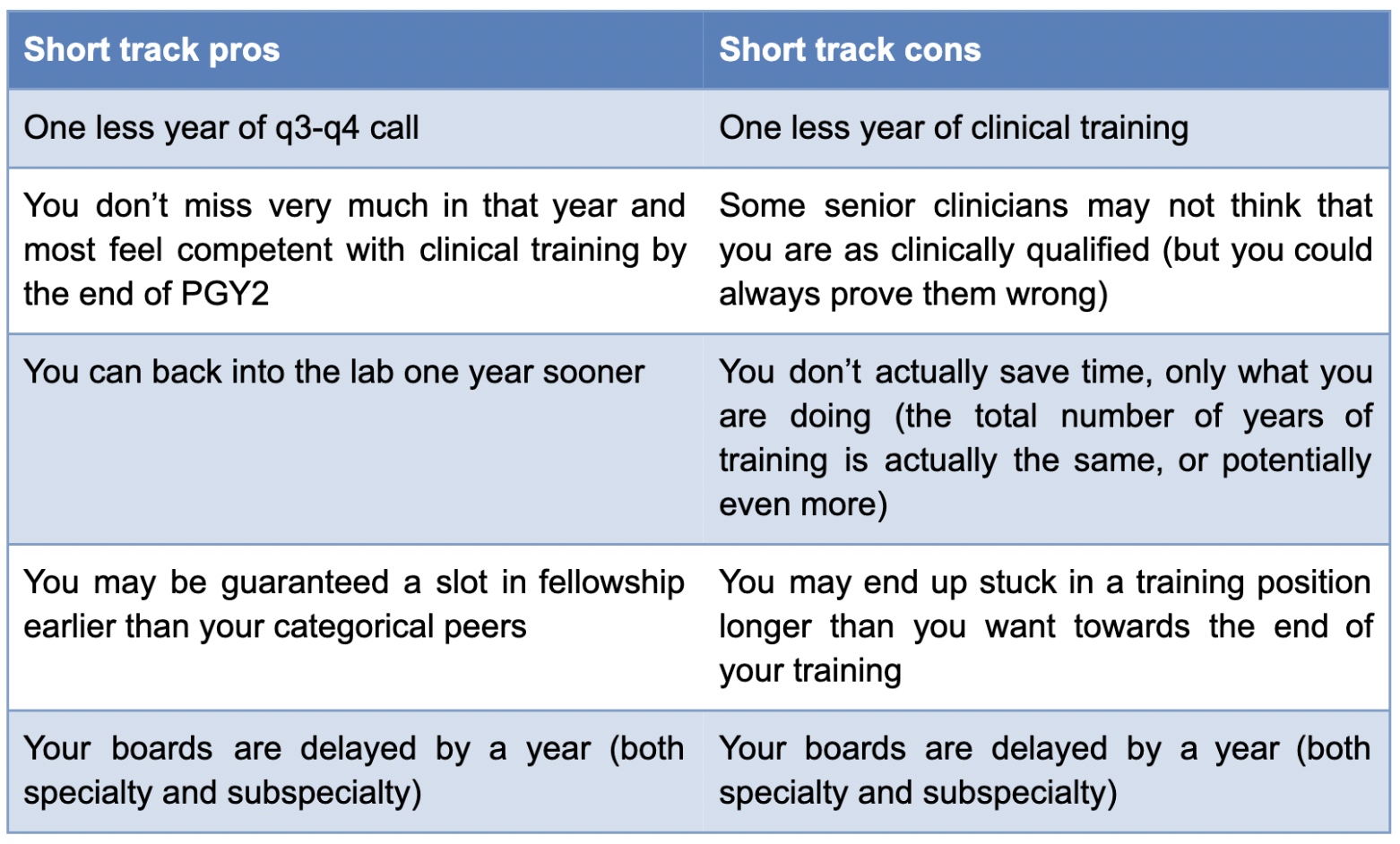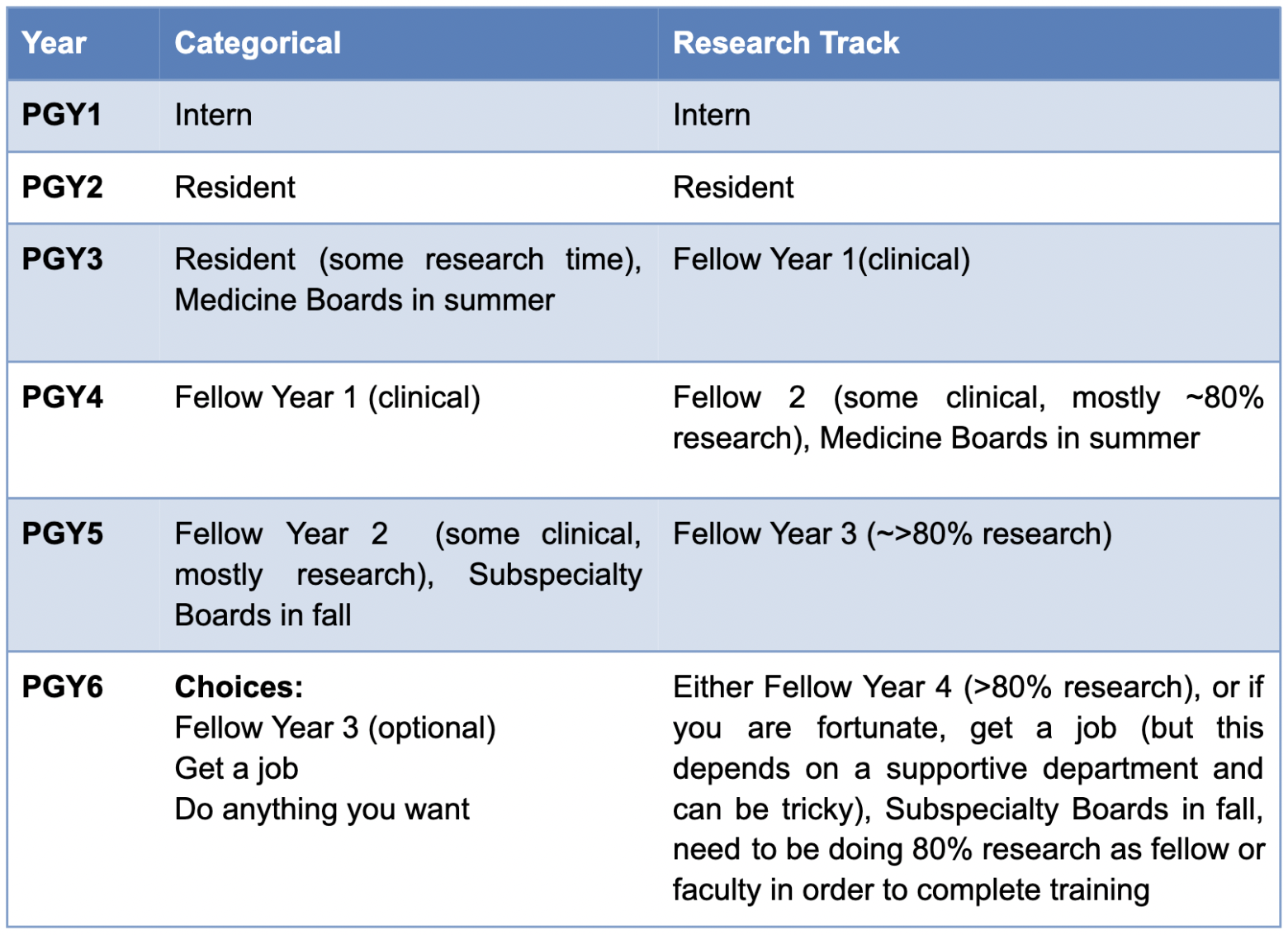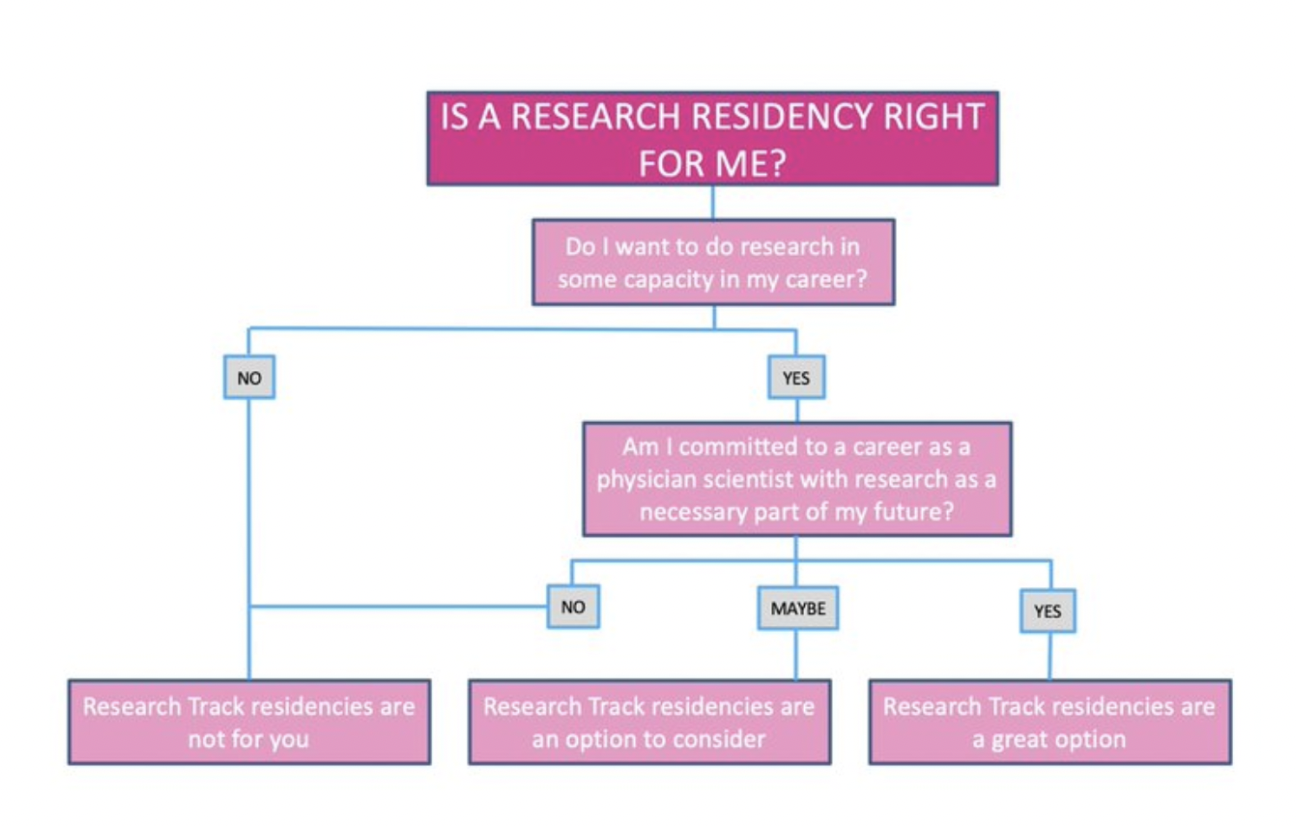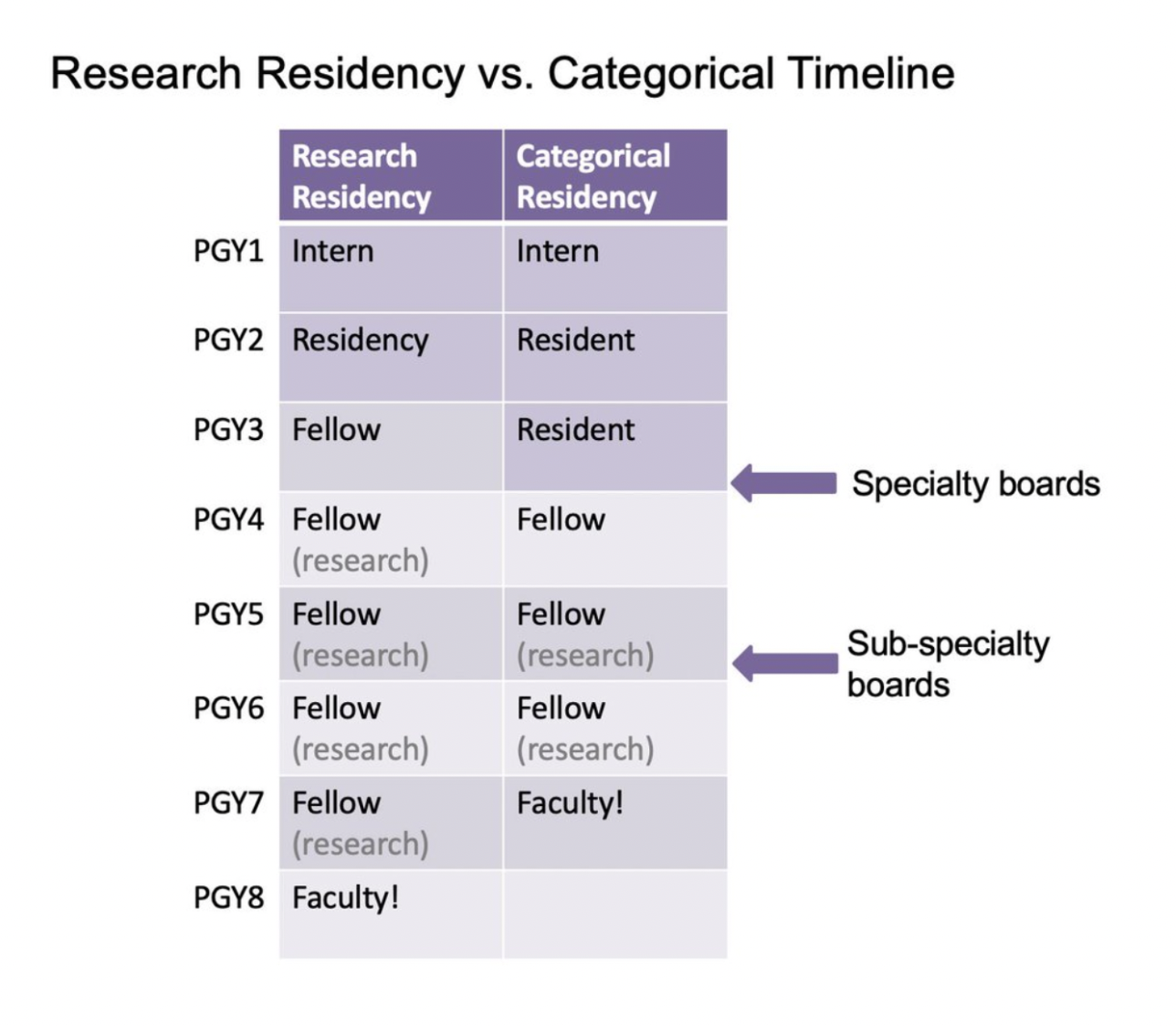Research vs. Categorical Residencies in Internal Medicine
For more info, see the AAMC guide to PSTP residencies.
Most major academic residencies offer a Physician Scientist Pathway (referred to below as a PSP) or Physician Scientist Training Pathway (PSTP) or fast-track, short-track, or research track. Like MSTPs, no two are the same. What they share is a goal of recruiting students (MD/PhD and MD with significant research background) to an institution for residency and then training beyond, typically using the ABIM research pathway (a.k.a., the short track). In many cases, these programs include easier access to fellowships at the same institution, and the extent to which this occurs at different programs, even within the same institution is highly variable. Most programs provide mentorship to help keep the science part of the brain working during residency. Your match into such a program does NOT require that you do a fellowship at the same institution. Here are some thoughts as you are considering options for what to do beyond graduation.
Think about your long-term goals. If academic medicine is your plan and being a physician scientist is your ultimate aspiration, then strongly consider a research track residency. These are not everywhere so the program you select has to offer the track and a discussion with the program director is necessary to see if the program can accomplish your goals. These programs come in several shapes in sizes and may lump clinical training together or separately.
Think about whether you want to do a fellowship. If so, it makes sense to consider this together with the residency program and try to come up with a plan with the program directors of both. Perhaps such a program already exists and this will be easier to set up and apply for.
Research tracks are one option…,but getting a traditional clinical training with a three year residency and then doing a fellowship is fine too. In actuality, there is not much difference, and this track may afford more flexibility later on if you decide you have different research or clinical interests later.
Look for a research-friendly program. Usually Medicine programs are the ones that offer research tracks or research concentration and among these, only a handful have a set research track. It helps if people have done this before at that program (because the option is fellowship-specific). If no-one has done this for your subspeciality before, talk it over with the program director – they may be amenable.
Look for protected research time. This means at least 75% of your time is off service, not holding a pager that can be dedicated to the lab. You have no idea how distracting a pager can be, even if it’s just answering questions by phone. In order to be successful and publish and get funded, protected time is essential.
So, you’ve finished your PhD and you’re ready to start your pathway to Physician Scientist-ness. Should you short-track or not?

To give you a sense of what a short track means in terms of logistics, here are two sample schedules for a categorical and a research track trainee, both of whom are pursuing a fellowship and planning to pursue a Physician Scientist career:

Ask lots of questions and think about your options.
- Perspective: Residency 101 for Physician-Scientists.
- https://resdb.physicianscientists.org/Main_Page
Wondering whether a research residency is right for you? Tweetorial:
https://twitter.com/taliaswartz/status/1277713569950371842?s=20

What are some benefits to research track residency?
- A community that includes mentoring and programming to help support you
- The expectation that you'll be recruited as faculty with protected research time - this is key to successful funding
- One less year of residency
What are some things to look for in specific programs?
- Does the institution have a PSTP?
- Are there Research in Residency programs?
- What is the K track record of graduates?
- Are graduates retained as faculty?
The choice to pursue a categorical track vs. research track hinges on one less year of residency at the expense of adding time on the back end to fellowship and research training later. Here's a sample timeline.

Questions?
There are many people you can ask:
- Faculty Advisor
- MSTP Leadership
- Physician Scientist Career Advisors